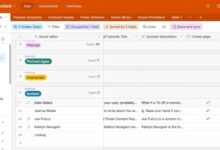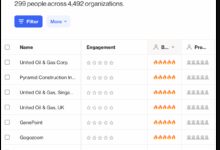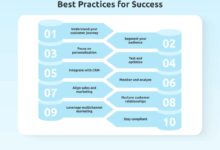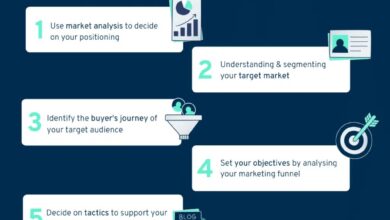B2B Campaign Tracking: 7 Powerful Strategies to Skyrocket ROI
Ever launched a B2B campaign and wondered what actually worked? You’re not alone. Mastering b2b campaign tracking isn’t just about data—it’s about turning insights into action. Let’s dive into how you can track smarter, not harder.
Why B2B Campaign Tracking Is a Game-Changer

In the complex world of B2B marketing, where sales cycles are long and decision-makers are many, understanding the impact of your campaigns is non-negotiable. Unlike B2C, where a single ad might drive immediate purchases, B2B relies on nurturing leads over weeks or months. That’s where b2b campaign tracking becomes your secret weapon.
Understanding the B2B Buyer’s Journey
The B2B buyer’s journey is multi-layered—awareness, consideration, and decision. Each stage requires different messaging and touchpoints. Without proper tracking, you’re essentially flying blind.
- Awareness: Prospects realize they have a problem.
- Consideration: They evaluate potential solutions.
- Decision: They choose a vendor.
Effective b2b campaign tracking maps interactions across these stages, helping you attribute conversions accurately.
The Cost of Poor Tracking
According to HubSpot, companies that track their marketing efforts see up to 3x higher ROI than those that don’t. Poor tracking leads to wasted budgets, misaligned teams, and missed opportunities. Imagine spending thousands on LinkedIn ads but not knowing which campaign drove demo requests. That’s not marketing—it’s gambling.
“What gets measured gets managed.” – Peter Drucker
Key Metrics for B2B Campaign Tracking
You can’t improve what you don’t measure. In b2b campaign tracking, certain KPIs stand out as critical indicators of success. These aren’t vanity metrics—they’re actionable insights.
Lead Conversion Rate
This measures how many prospects turn into qualified leads. For example, if 1,000 people download your whitepaper and 100 become SQLs (Sales Qualified Leads), your conversion rate is 10%. Tracking this by campaign helps identify high-performing content.
Customer Acquisition Cost (CAC)
CAC tells you how much it costs to acquire a customer through a specific campaign. Divide total campaign spend by the number of new customers acquired. A high CAC might signal inefficiencies in targeting or messaging.
Return on Ad Spend (ROAS)
ROAS is crucial for paid campaigns. If you spend $10,000 on Google Ads and generate $50,000 in revenue, your ROAS is 5:1. This metric directly ties campaign performance to revenue, making it indispensable in b2b campaign tracking.
Essential Tools for B2B Campaign Tracking
Manual tracking is outdated and error-prone. The right tools automate data collection, provide real-time insights, and integrate with your CRM. Here’s a breakdown of the most effective platforms.
Google Analytics 4 (GA4)
GA4 is a cornerstone for b2b campaign tracking. It offers event-based tracking, cross-platform measurement, and advanced attribution models. Set up custom events for form submissions, content downloads, and demo requests to monitor user behavior.
- Use UTM parameters to tag URLs.
- Set up conversion events for key actions.
- Leverage audience segmentation for retargeting.
Learn more about GA4 setup at Google’s official guide.
HubSpot Marketing Hub
HubSpot excels in tracking the entire customer journey. From lead capture to deal closure, it ties marketing efforts to sales outcomes. Its campaign tracking feature allows you to group content, emails, and ads under a single campaign for unified reporting.
- Create campaign records for each initiative.
- Track email open rates, click-throughs, and form fills.
- Sync with Salesforce or other CRMs for full funnel visibility.
Marketo or Pardot
For enterprise-level b2b campaign tracking, tools like Marketo (Adobe) and Pardot (Salesforce) offer deep integration with CRM systems. They provide lead scoring, behavioral tracking, and ROI reporting tailored for complex sales cycles.
- Automate lead nurturing workflows.
- Track engagement across multiple channels.
- Generate detailed campaign performance dashboards.
Setting Up UTM Parameters for Accurate Tracking
UTM (Urchin Tracking Module) parameters are small tags added to URLs that tell analytics tools where traffic is coming from. They are fundamental to b2b campaign tracking.
Breaking Down UTM Components
Each UTM tag includes five key parameters:
- utm_source: Identifies the traffic source (e.g., linkedin, google).
- utm_medium: Specifies the marketing medium (e.g., cpc, email, social).
- utm_campaign: Names the campaign (e.g., q4_webinar, product_launch).
- utm_term: Used for paid search keywords (optional).
- utm_content: Differentiates similar content (e.g., banner_ad_vs_text_link).
Example: yourwebsite.com/webinar?utm_source=linkedin&utm_medium=social&utm_campaign=q4_webinar&utm_content=video_post
Best Practices for UTM Tagging
Consistency is key. Use a standardized naming convention across teams. Avoid spaces—use underscores or hyphens. Document your UTM strategy in a shared spreadsheet to prevent confusion.
- Use lowercase to avoid case-sensitive issues.
- Keep campaign names short and descriptive.
- Test tagged links before publishing.
Use Google’s Campaign URL Builder to generate UTM links easily.
Multi-Touch Attribution Models in B2B Campaign Tracking
In B2B, a single touchpoint rarely closes a deal. Prospects interact with your brand across emails, webinars, social media, and sales calls. Multi-touch attribution assigns credit to each interaction, giving a realistic view of what drives conversions.
First-Touch vs. Last-Touch Attribution
First-touch gives 100% credit to the initial interaction. Last-touch credits the final touchpoint. Both are flawed for B2B. First-touch ignores nurturing efforts; last-touch overlooks awareness-building.
Linear, Time-Decay, and Position-Based Models
These models distribute credit more fairly:
- Linear: Equal credit to all touchpoints.
- Time-Decay: More credit to interactions closer to conversion.
- Position-Based: 40% to first and last touch, 20% to middle interactions.
For b2b campaign tracking, position-based often works best, recognizing both entry and exit points.
Choosing the Right Model for Your Business
There’s no one-size-fits-all. Test different models using your CRM and marketing automation data. If your sales cycle is short, time-decay may suffice. For longer cycles, linear or position-based models offer better insights.
Integrating CRM and Marketing Automation
True b2b campaign tracking happens when marketing and sales data converge. Siloed systems lead to fragmented insights. Integration ensures every lead interaction is tracked from first click to closed deal.
Salesforce + Marketing Cloud Integration
Salesforce is the gold standard for B2B CRMs. When paired with Marketing Cloud, you can track lead sources, campaign influence, and deal progression. Use Salesforce Campaigns to link marketing efforts to opportunities.
- Sync campaign members with leads and contacts.
- Track ROI per campaign in real-time.
- Use reports to show marketing’s impact on revenue.
HubSpot CRM and Salesforce Sync
For mid-market companies, syncing HubSpot with Salesforce ensures seamless b2b campaign tracking. Set up bidirectional sync to keep data consistent. Map HubSpot campaigns to Salesforce campaigns for unified reporting.
- Automate lead assignment based on campaign performance.
- Track lead lifecycle stages across platforms.
- Generate executive dashboards showing marketing ROI.
Data Hygiene and Governance
Integration only works with clean data. Enforce data entry standards, deduplicate records, and audit regularly. Poor data quality undermines even the best b2b campaign tracking systems.
- Standardize company names and job titles.
- Use validation rules in CRM.
- Train teams on data entry protocols.
Creating a B2B Campaign Tracking Dashboard
A dashboard turns raw data into actionable insights. It should be accessible, real-time, and tailored to stakeholder needs—whether it’s the CMO, sales manager, or marketing analyst.
Key Components of an Effective Dashboard
Your dashboard should include:
- Campaign performance by channel.
- Lead volume and quality over time.
- Conversion rates by stage.
- ROI and CAC by campaign.
- Top-performing content assets.
Use visualizations like bar charts, line graphs, and heatmaps to make data digestible.
Tools for Dashboard Creation
Google Data Studio (now Looker Studio), Tableau, and Power BI are powerful tools for building custom dashboards. They connect to GA4, CRM, and ad platforms, pulling data into a single view.
- Looker Studio: Free and integrates well with Google tools.
- Tableau: Advanced analytics for large datasets.
- Power BI: Ideal for Microsoft-centric organizations.
Explore Looker Studio templates to get started quickly.
Sharing and Automating Reports
Automate weekly or monthly reports to keep stakeholders informed. Schedule email deliveries and set up alerts for anomalies—like a sudden drop in lead quality. This proactive approach strengthens b2b campaign tracking discipline.
Common Pitfalls in B2B Campaign Tracking (And How to Avoid Them)
Even experienced marketers fall into traps. Recognizing these pitfalls early can save time, money, and credibility.
Over-Reliance on Last-Touch Attribution
Too many companies credit the last click alone. This undervalues content marketing, SEO, and nurturing campaigns. Solution: Adopt multi-touch attribution and educate sales teams on the full funnel.
Inconsistent Naming Conventions
If one team calls a campaign “Q4_Seminar” and another “Webinar_October”, data becomes messy. Establish a naming protocol and enforce it across departments.
Ignoring Offline Conversions
Not all conversions happen online. Trade shows, phone calls, and in-person meetings matter. Use offline conversion tracking in Google Ads or manually tag CRM records to close the loop.
Advanced Tactics: AI and Predictive Analytics in B2B Campaign Tracking
The future of b2b campaign tracking lies in AI. Predictive analytics can forecast lead behavior, optimize ad spend, and recommend next-best actions.
Predictive Lead Scoring
AI models analyze historical data to predict which leads are most likely to convert. Tools like Infer and 6sense use machine learning to prioritize high-intent prospects, improving sales efficiency.
Budget Optimization with AI
Platforms like Google Ads and LinkedIn now offer AI-driven bidding strategies. These adjust bids in real-time based on conversion likelihood, maximizing ROI without manual intervention.
Challenges of AI Adoption
AI requires clean data and skilled personnel. Start small—use built-in AI features in your existing tools before investing in standalone platforms.
Case Study: How a SaaS Company Improved ROI by 140% with Better Tracking
Let’s look at a real-world example. A mid-sized SaaS company selling project management software struggled with unclear campaign performance. They used generic UTM tags and relied on last-touch attribution.
The Problem
Sales blamed marketing for low-quality leads. Marketing claimed leads were engaged but sales wasn’t following up. Revenue stagnated despite increased ad spend.
The Solution
They implemented:
- Standardized UTM parameters.
- HubSpot for campaign grouping and lead tracking.
- Position-based attribution model.
- Monthly cross-functional reviews with shared dashboards.
The Results
Within six months:
- Lead-to-customer conversion rate increased by 65%.
- CAC dropped by 30%.
- Marketing-sourced revenue grew by 140%.
This case proves that b2b campaign tracking isn’t just technical—it’s strategic.
Future Trends in B2B Campaign Tracking
The landscape is evolving. Privacy regulations, cookie deprecation, and AI are reshaping how we track campaigns.
The Rise of Privacy-First Tracking
With iOS updates and GDPR, third-party cookies are fading. First-party data collection—through gated content, email signups, and consent-based tracking—is becoming essential. Invest in your data capture infrastructure now.
Server-Side Tracking
Server-side tracking bypasses browser limitations by sending data directly from your server to analytics tools. It’s more reliable and privacy-compliant. Google’s Server-Side GTM is a game-changer for b2b campaign tracking.
Unified Measurement Platforms
Expect more all-in-one platforms that combine analytics, attribution, and AI. The goal? Simplify b2b campaign tracking while delivering deeper insights.
What is b2b campaign tracking?
B2B campaign tracking is the process of monitoring and analyzing marketing efforts to understand which strategies drive leads and sales in business-to-business markets. It involves using tools and metrics to measure performance across channels and touchpoints.
Why is multi-touch attribution important in B2B?
Because B2B sales cycles are long and involve multiple interactions, multi-touch attribution gives credit to all touchpoints, providing a more accurate picture of what influences conversions.
What are the best tools for b2b campaign tracking?
Top tools include Google Analytics 4, HubSpot, Marketo, Pardot, and Salesforce. The best choice depends on your tech stack, budget, and team size.
How do UTM parameters improve tracking?
UTM parameters tag URLs with source, medium, and campaign info, allowing analytics tools to identify where traffic comes from. This enables precise b2b campaign tracking across digital channels.
Can you track offline B2B campaigns?
Yes. Use unique phone numbers, promo codes, or manual CRM tagging to track offline efforts like events or direct mail. Integrate this data with digital tracking for a full picture.
Mastering b2b campaign tracking transforms marketing from a cost center to a revenue driver. By leveraging the right tools, metrics, and strategies, you gain clarity on what works—and what doesn’t. Whether it’s setting up UTM parameters, adopting multi-touch attribution, or building executive dashboards, every step brings you closer to data-driven success. The future of B2B marketing isn’t just about spending more—it’s about measuring smarter.
Further Reading:







